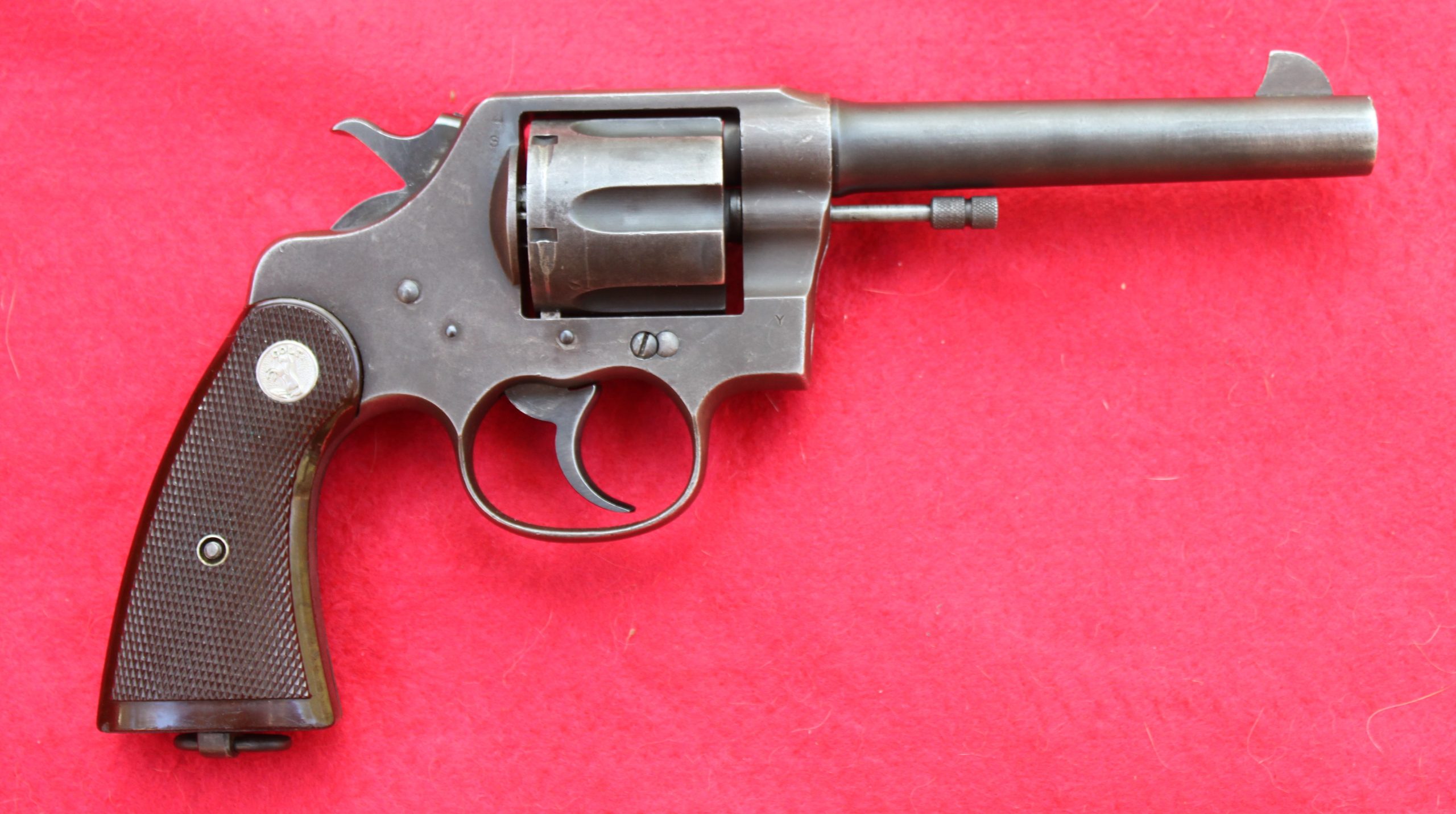
By Jim Dickson | Contributing Writer
(Images by Author and Courtesy OFM, Alan Aaronstein)
OFM Corp. of Houston, Texas is the firm that Colt Firearms is referring all customers to who have Colt guns that are out of production and needing repair.
They could not have picked a better place. OFM Corp. is supervised by Alan Aaronstein, who also owns Interarms, High Standard Firearms, and AMT Firearms. I have known many of America’s greatest gunsmiths over the years and I rank Alan up there with the best because of his skill and technical expertise.
Alan has trained his gunsmith’s well and that’s a very good thing as contrary to popular opinion, revolvers can develop many serious problems leading to jams and malfunctions. Over the years I have had far more jams with revolvers than semi-automatic pistols and their problems can also be more difficult to diagnose and fix than with semi-autos. With automatics you generally just have to replace parts, but revolvers require tuning and timing which is time consuming and requires a higher skill level to do properly. Disassembly and reassembly of a double action revolver is no job for amateurs much less repairing one.
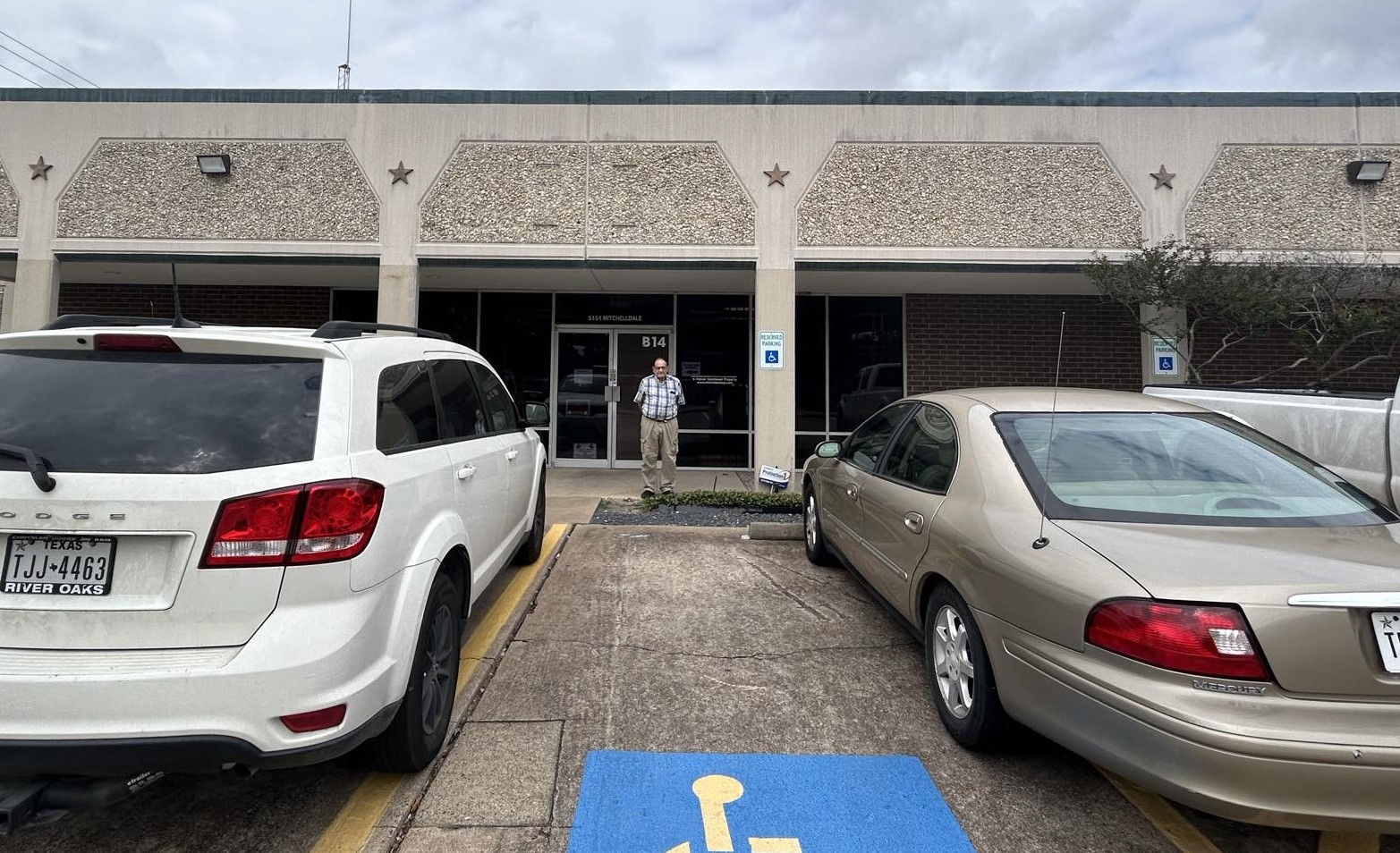
In use, a revolver will eventually get out of time, meaning the parts no longer function in order at the proper time and amount. This can cause a failure to fire when the firing pin no longer hits the center of the primer. Sometimes the cylinder won’t turn at all. At other times it doesn’t index properly with the barrel and shaves bullet lead off at the forcing cone when firing. Getting all these parts to work together again is no job for an amateur. Replacement parts must be hand fitted to work properly with the individual gun taking into account the wear on the remaining parts.
Springs wear out and the cylinder may not position itself for locking or the cylinder lock may fail. The gun may no longer be able to cycle and fire. If the big mainspring breaks the revolver cannot be used until it is replaced.
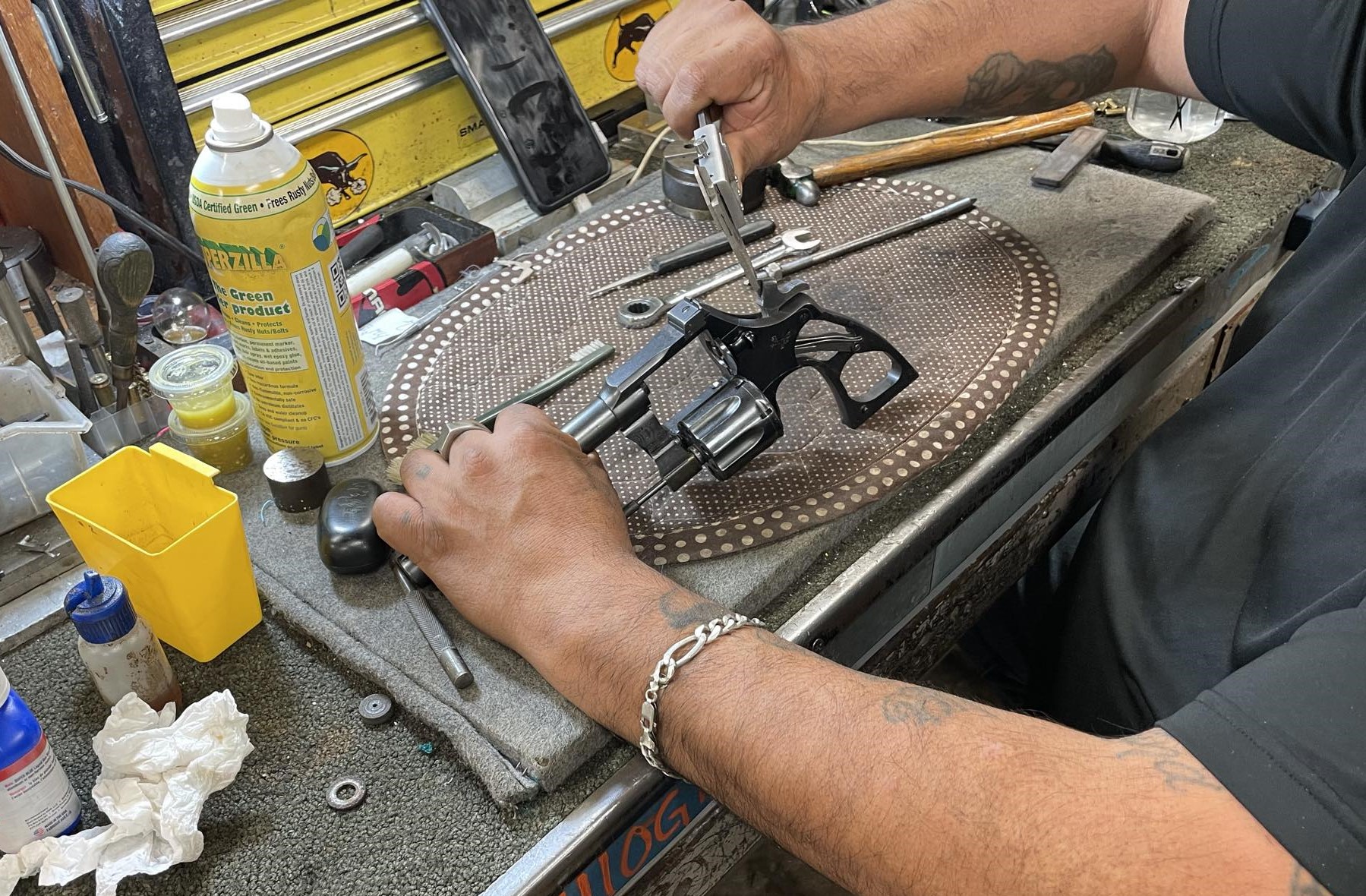
Many times a home “Gunsmith” takes a little metal off these mainsprings to lighten the trigger pull. There is an extremely fine line between just lightening the pull a little bit and not having enough power to set off a primer. This line is so small that a good gunsmith will not do this work unless he has another mainspring as a backup in case he inadvertently crosses this line.
Sometimes pins break or wear out. This can leave the trigger so loose that it can’t work the hammer.
Grips can warp or be overtightened and block the mainspring from functioning. This often occurs with replacement grips.
Screws come loose and suddenly the gun won’t work. I have a couple of single actions that have to have the screws retightened after every box of shells is fired. OFM just got in a Colt Detective Special with the barrel loose in the threads.
Speaking of single actions, some of the Italian copies of the Colt Single action have a separate recoil shield behind the cylinder instead of a solid frame there. When these deform you will load a few cartridges and the gun will lock up. No binding will meet the eye, yet you will have to take the cylinder pin out and remove the cylinder to unload it. The gun will operate just fine until you load a few rounds and then it will lock up again. I had this happen on one of these revolvers and a friend’s son had it happen to two different revolvers.
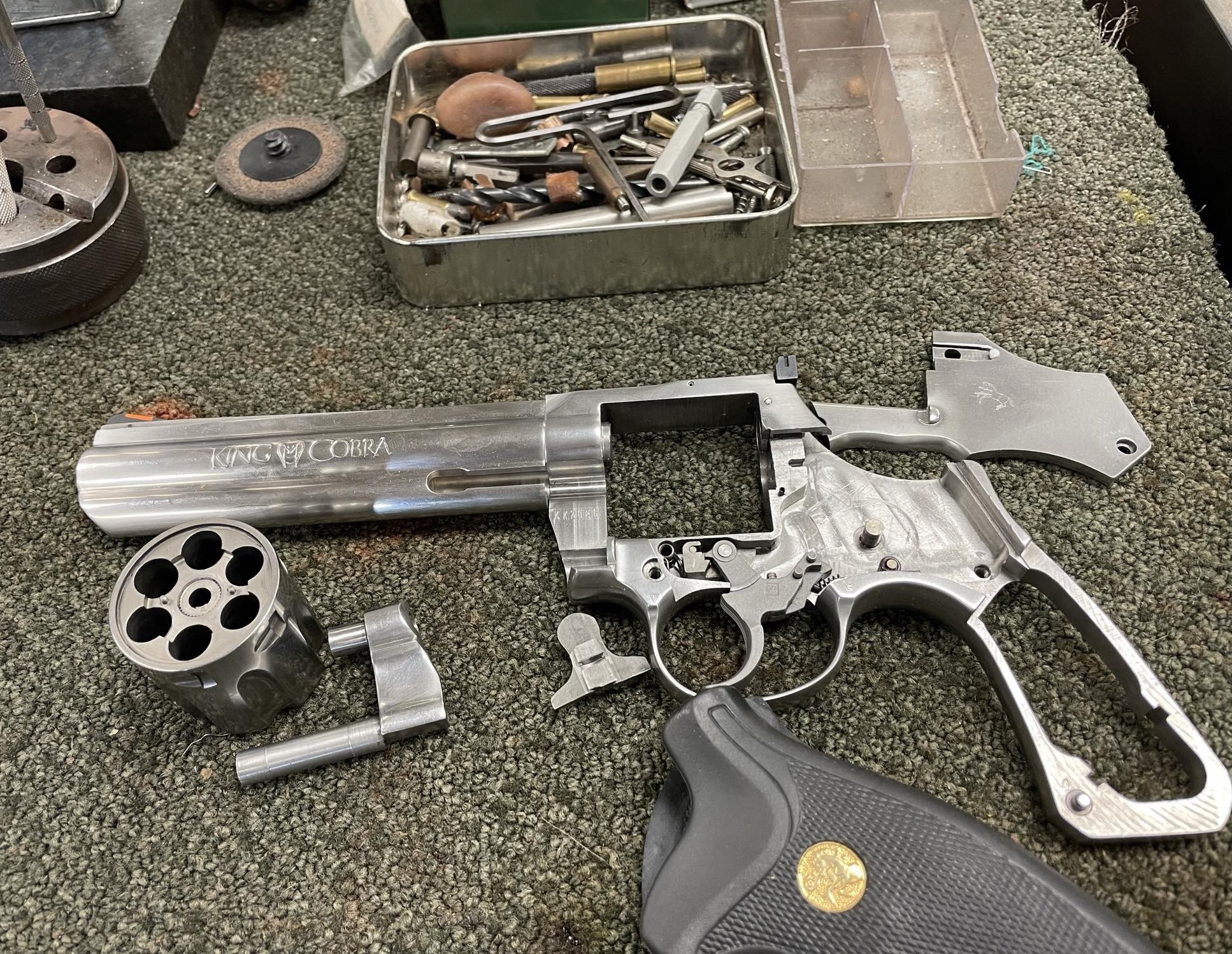
Overzealous buffing to remove pits prior to rebluing can make the cylinder notches too shallow to lock the cylinder.
A Colt Python presented an unusual problem. After another gunsmith had polished it the revolver quit working. This gunsmith could not figure out why and neither could a second gunsmith. When the gun was brought to Alan, he found that the tiny ledge on the linkage from the trigger that activates the hammer drop safety had been polished off and the gun would not work without it.
These are just some of the mechanical things that can go wrong with revolvers causing jams and malfunctions. It should never be forgotten that a Model 1911A1 will throw sand out of every joint while it keeps on firing but a revolver that has sand in the mechanism locks up as tight as a bank vault. In the mud that marked much of WWI the S&W triple lock revolvers of the British failed in the mud while the German Luger threw the mud off and kept firing.
The point is that it is a myth that revolvers are more reliable than automatics. I love my revolvers but over a lifetime of shooting I have had far more trouble with them than automatics and they required a higher gunsmithing level of expertise to fix. That’s why choosing the best to work on a revolver that you may someday depend upon to save your life is so important.
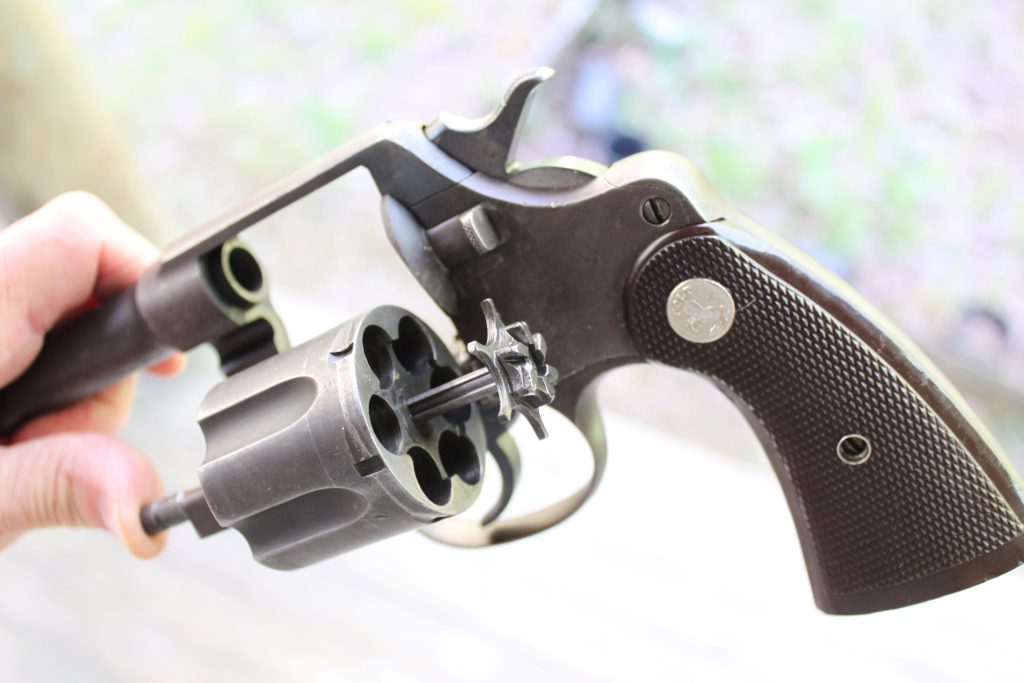
To give OFM a worthy challenge to prove themselves with I sent them two revolvers that had defeated the best efforts of two different gunsmiths (both now deceased) for whom I had the utmost respect.
The first was a Model 1917 Colt .45 ACP. This was a gun that Army Ordnance had rebuilt for WWII. They botched the job. At times the gun locked up and could not be operated until the hammer was lowered and the cylinder moved a bit by hand until it would work again. The hammer blow was normally enough to not only crush the primer but also break the outer metal layer of the primer yet sometimes it gave a weak blow that would barely mark the primer without setting it off. The trigger return was slow. Previously it was sticking until I got an army ordnance man to remove some metal where the rebuilt mechanism was dragging on the sideplate, but it was still slow to return the trigger.
I had taken this gun to a gunsmith who had previously been employed by a big city police department and having retired from that had gained fame nationally as a gunsmith. He told me it could not be fixed. Well, OFM fixed it.
There was 1/16 of an inch play in the ejector ratchet rod, which was causing binding when the gun operated, resulting in a slow trigger return and occasional locking up when the hand got stuck in the ratchet groove of the ejector rod. The ratchet ejector rod was built up by welding and then machined down to proper tolerances and the internal parts were polished and tuned. The gun works perfectly now and i’s previously “just average” double action trigger pull is greatly improved. It was test fired with 300 rounds of Black Hills 230-grain FMJ, 300 rounds of Black Hills 230-grain JHP, and 40 rounds of Steinel Ammunition Co. 230-grain SCHP (solid copper hollow point) for a total of 640 rounds without a problem. At 39 ounces the big Colt New Service was pleasant to shoot with the powerful .45 ACP rounds.
The next revolver was an early production Colt Police Positive .38 Special that a different gunsmith had thrown up his hands in frustration declaring “I quit! I’m not trying to fix this gun any more!” He was a very fine gunsmith and I felt sympathy for his frustration.
OFM had to gut this gun and replace almost all of the internal parts as they were a miss mash of parts including gunsmith made parts and parts from other model guns. The Colt had worked perfectly dry firing but when you fired live ammo in it, the parts jammed together out of place and the trigger pull needed to force the jam free varied up to 100 pounds and back up and down from shot to shot. All new parts properly timed and tuned together to this gun fixed it and gave it a magnificent double action trigger pull. That’s important on such a small, light .38 Special if you are planning to hit anything shooting double action.
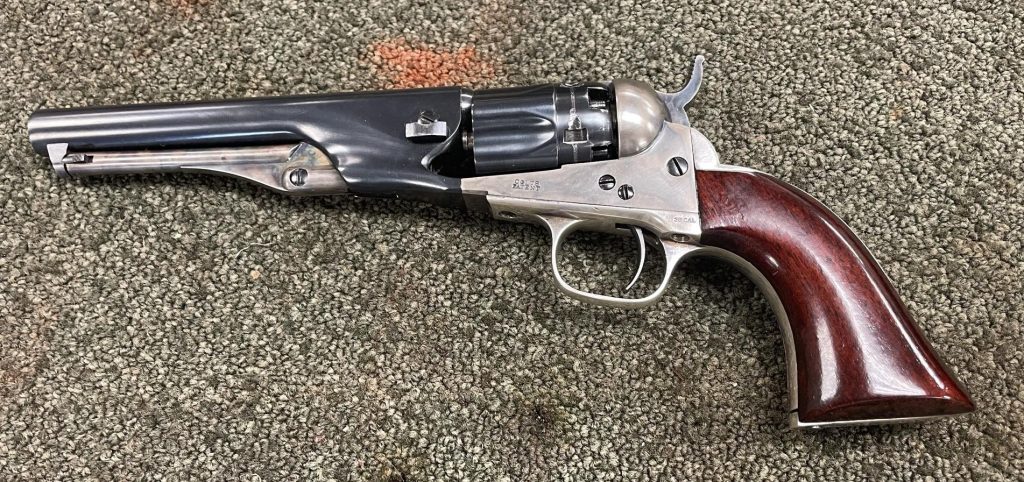
This was a case where the cost of repair far outweighed the value of the gun. It was test fired with 500 rounds of Black Hills 125-grain JHP +P, 500 rounds of Black Hills 158-grain CNL (cone nose lead) and 20 rounds of Steinel 125-grain +P SCHP (solid copper hollow point) for a total of 1,020 rounds again with no problems. It’s worth noting that at a mere 21 ounces, this tiny .38 Special had a lot of recoil and shooting that many rounds in such a small amount of time began to hurt. This gun was designed to be effortless to carry but like all underweight guns it is not pleasant to shoot. One thing in its favor though is that the old style Colt grips make easier to aim and hit the target.
Needless to say the guns were quite filthy after all this shooting so they were cleaned up with Shooters Choice bore cleaner, lead remover, and copper remover, with Shooters Choice brass brushes and patches. Final lubrication was with Ballistol oil from Germany.
These two revolvers had defeated first class gunsmiths, yet Alan Aaronstein was able to make them work better than when they were new without any problem. That’s the kind of work you need on a gun that you may someday have to depend upon in a life-saving situation. It’s no wonder that Colt is sending all of its discontinued model repair cases to him at OFM. They know that he will get the job done right the first time.
OFM Corporation
5151 Mitchelldale St. STE B14
Houston, Texas 77092-7201
713-476-0888
coltfirearmsrepair.com



